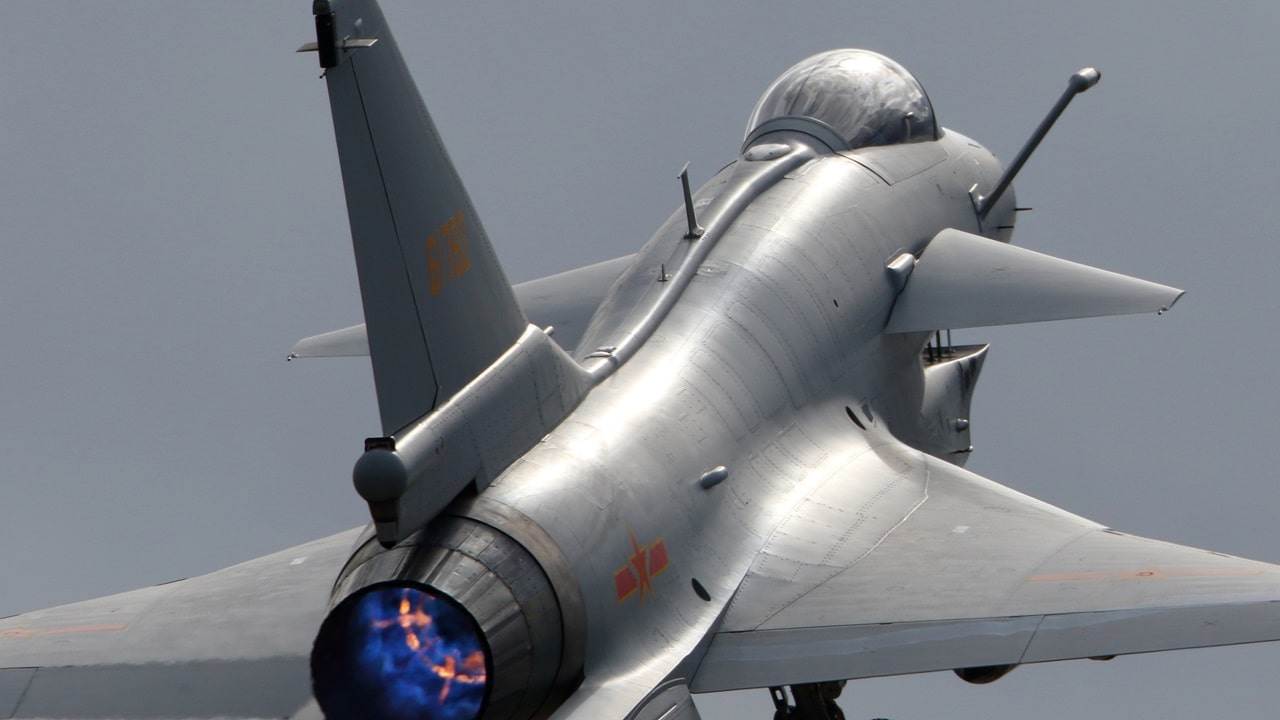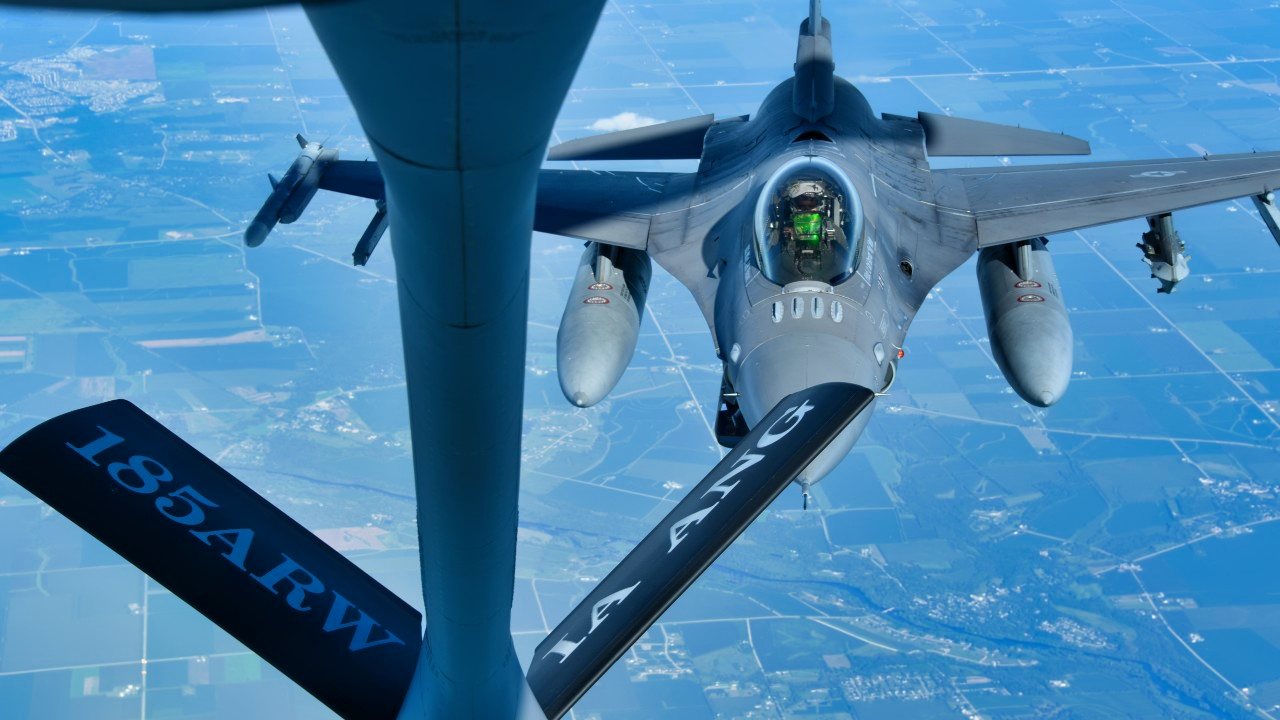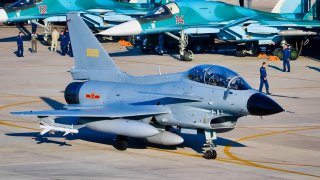Fighter Showdown: China's J-10 vs. America's F-16 Fighting Falcon
The J-10 “Vigorous Dragon” and the F-16 “Fighting Falcon” represent two of the most advanced multirole strike fighters from China and the U.S. Initially flown in 1998, the J-10 has undergone significant upgrades, including a homegrown WS-10B engine and AESA radar, enhancing its combat capabilities.
Summary: The J-10 “Vigorous Dragon” and the F-16 “Fighting Falcon” represent two of the most advanced multirole strike fighters from China and the U.S. Initially flown in 1998, the J-10 has undergone significant upgrades, including a homegrown WS-10B engine and AESA radar, enhancing its combat capabilities. The F-16, first flown in 1974, continues to be a versatile aircraft through constant updates, with plans to extend its service into the 2040s. Both aircraft demonstrate their countries’ aerospace achievements and commitments to maintaining air superiority, with the J-10 showcasing China's growing self-reliance in defense technology and the F-16 illustrating the U.S.'s continuous evolution in fighter design.
J-10 vs F-16: Duel of the Skies Between China and the U.S.
The past two decades have seen China’s rise on the international stage as a power with which to be reckoned.
Today, the People’s Liberation Army, Navy, and Air Force are seen as the pacing threats against which the U.S. military measures itself. The PLAAF, in particular, has proven highly adept at producing advanced new aircraft. The J-10 “Vigorous Dragon,” while first flown in 1998, has seen continued development to make it a highly credible multirole strike fighter.
The closest U.S. contemporary to the J-10 is the F-16 “Fighting Falcon.” While this aircraft is certainly older than the J-10, first flying 50 years ago in 1974, it is still a competent aircraft. Constant improvements have kept it in the fight, and many are currently undergoing an upgrade program designed to keep them flying until the 2040's.
Can we get a sense of which fighter might be better?
J-10 Background
From its beginning in the 1980s, the J-10 was a unique aircraft. The acquisition process to design and produce the Vigorous Dragon resembled the Western bidding process more closely than previous PLAAF programs. Rather than the designer being a selected institution, several leading firms were invited to compete on the design.
Once the Chengdu Aircraft Design Institute (CADI) was selected, they became directly responsible to the PLAAF instead of an intermediary committee. This allowed the PLAAF to communicate its needs and desires for the forthcoming aircraft more readily.

The aircraft CADI produced was a delta wing, forward canard, single-engine fighter. These characteristics, lacking the typical horizontal stabilizers in the tail section, increase the J-10’s slow-speed maneuverability while allowing it to achieve a top speed of Mach 1.8 (times the speed of sound). Initial models were powered by the Russian AL-31 engine, providing 28,000 pounds of thrust. To carry out its multiple missions, the J-10 is equipped with various armaments. An internal 23mm cannon can be used for ground strafing or air-to-air engagements. Eleven hardpoints capable of carrying 12,300 pounds can mount any of the external fuel tanks, air-to-air missiles, air-to-surface missiles, or bombs.
J-10 Upgrades
As technologies matured through the 2000s, the PLAAF recognized the need to upgrade the J-10.
The latest model, the J-10C, features several significant improvements to keep the J-10 relevant for years to come. New models feature the WS-10B engine, a homegrown turbofan that reduces reliance on Russia. An improved inlet design decreases the radar profile - while the J-10 is no stealth fighter, it will be more challenging to acquire on radar.
One of the major advances for the newest J-10 models is the transition to an Active Electronically Scanned Array (AESA) radar. While the exact specifications of the equipment in the J-10 are unknown, AESA radar sets offer significant improvements in range and fidelity over traditional mechanically scanned radars. Additionally, they often allow operators to track and engage more targets simultaneously, a must in a highly contested battlespace.

From an offensive standpoint, integrating new weapons racks makes the J-10 compatible with modern Chinese missiles such as the PL-10 and PL-15. An integrated CM-802AKG targeting pod improves ground attack capability.
F-16 Background
In the 1970s, the “Fighter Mafia” began pushing the U.S. Air Force to use novel ideas in designing its next-generation aircraft. Previous fighter designs had either focused on achieving high straight-line speeds or being able to swiftly climb up to altitude to intercept bombers. However, a cadre of officers and civilians began pushing for a design based on the energy-maneuverability theory. The result was the F-16 Fighting Falcon.
Originally conceived as a day air-superiority fighter, over the past five decades, the F-16 has expanded to become an all-weather strike fighter. With over 25 nations operating some variants of the F-16, it is one of the most widely adopted combat aircraft. With success in wars from the First Gulf War to employment during the Syrian Civil War, it remains the gold standard of fourth-generation fighters.

The Air Force's Fighting Falcon fleet is undergoing its latest overhaul to retain an edge over competitors. These modified Block 40 and 50 variants are expected to remain in service well into the 2040s.
As detailed by The Aviationist, “A total of 608 Block 40 and Block 50 aircraft, the so-called “Post Block” F-16s, will be upgraded through the Post Block Integration Team (PoBIT) project managed by the Air Force Life Cycle Management Center’s Fighters and Advanced Aircraft Directorate. The project includes up to 22 modifications designed to improve lethality and ensure the fourth-generation fighter remains effective in meeting current and future threats.”
About the Author: Maya Carlin
Maya Carlin, National Security Writer with The National Interest, is an analyst with the Center for Security Policy and a former Anna Sobol Levy Fellow at IDC Herzliya in Israel. She has by-lines in many publications, including The National Interest, Jerusalem Post, and Times of Israel. You can follow her on Twitter: @MayaCarlin.


